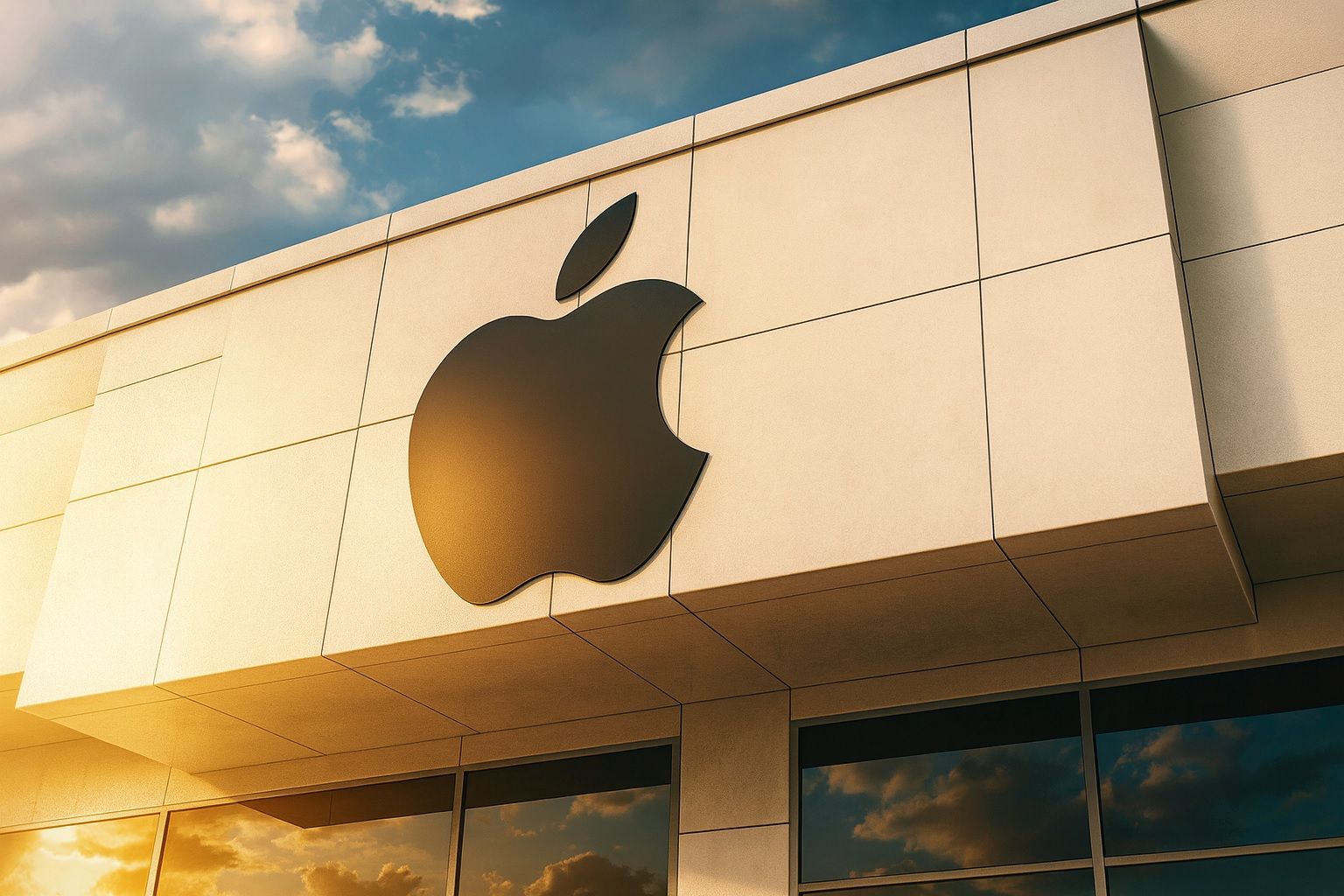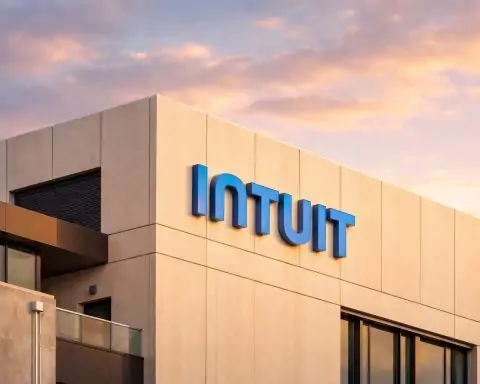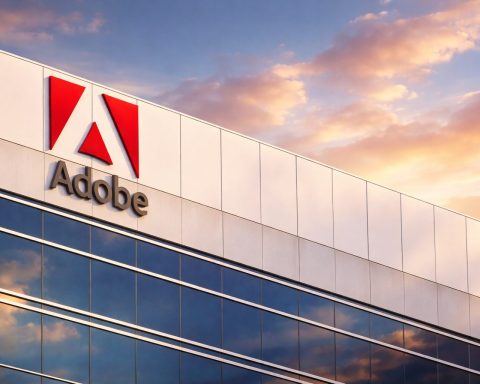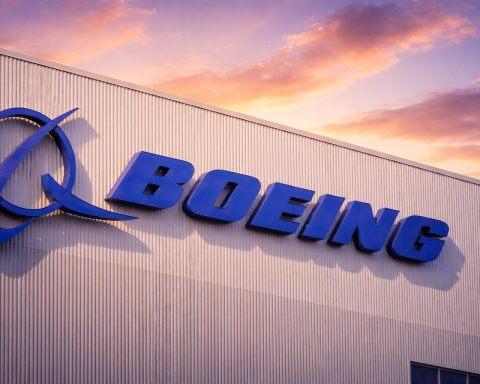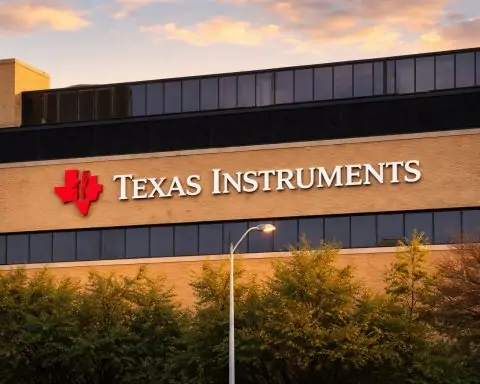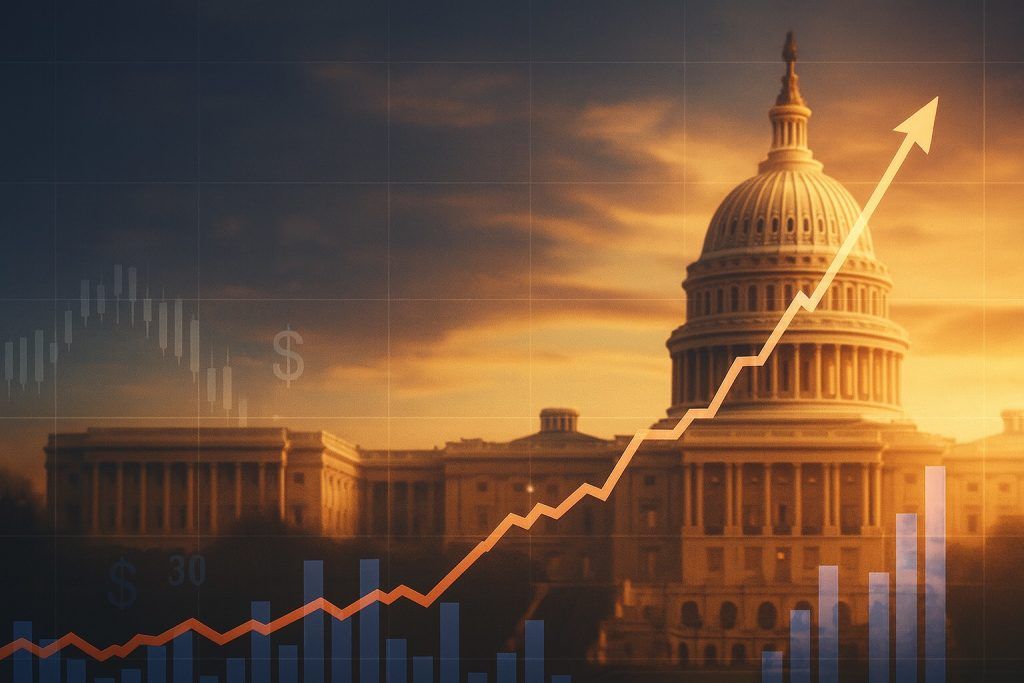- Near Record High: Apple’s stock (NASDAQ: AAPL) is hovering around $252–$253 per share as of October 20, 2025 – just shy of its all-time high (~$260) [1]. The stock is roughly flat year-to-date (up only ~2% in 2025) after a choppy year, underperforming other Big Tech peers like Nvidia, Microsoft, and Alphabet (which are up 20–35% YTD amid the AI boom) [2] [3].
- New Products & AI Boost: Apple quietly launched new devices last week powered by its advanced 3nm M5 chip – including a revamped MacBook Pro, updated iPad Pros, and a second-generation Vision Pro AR headset [4]. Notably, Apple did not raise prices on these upgrades (unusual in an inflationary environment), signaling a push for market share. The M5 chip delivers ~15% faster CPU performance and 4× the AI processing capability of the prior generation, enhancing on-device AI features [5] [6].
- iPhone 17 “Supercycle” Buzz: Early data show strong demand for Apple’s new iPhone 17 lineup (launched in September). Unit sales are trending 10–15% higher than last year’s iPhone 16 launch period [7]. Apple also kept iPhone 17 prices flat versus last year (the Pro model still starts at $1,099), effectively delivering more value at the same cost and fueling talk of a long-awaited upgrade “supercycle” [8]. In China, for example, Apple was the only top smartphone brand to grow shipments in Q3 – thanks in part to the new iPhone 17 capturing value-seeking customers [9].
- Leadership Shifts: Apple is mapping out succession plans at the top. Longtime COO Jeff Williams will retire by end of 2025, with operations SVP Sabih Khan slated to take over operations [10]. Hardware chief John Ternus (50) is widely viewed as a leading contender to eventually succeed CEO Tim Cook [11], though Cook remains at the helm for now. These behind-the-scenes moves are part of “careful succession planning” to ensure continuity in Apple’s leadership [12].
- Analysts Split on Outlook:Wall Street is divided on AAPL’s prospects. Bulls like Wedbush’s Dan Ives predict a coming “golden era” – Ives recently raised his price target to $310 on optimism about iPhone 17 demand [13]. But bears are cautious: for instance, Jefferies just downgraded Apple to Underperform with a ~$205 target, arguing the stock already reflects “excessive expectations” for upcoming innovations [14]. The consensus 12-month price target sits only in the mid-$250s, implying modest upside from current levels [15].
- Earnings & Risks Ahead: Apple reports earnings in late October, and Wall Street forecasts roughly $101 billion in revenue and $1.74 EPS for the quarter [16]. In the previous quarter, Apple beat expectations ($94B revenue, +10% YoY) and even raised its outlook [17]. Investors are watching whether the iPhone 17 “supercycle” translates into strong holiday-quarter guidance. Key wildcards include macro and regulatory risks: recent U.S.–China trade tensions (new tariff threats) have injected volatility [18], and in China a group of consumers just filed an antitrust complaint alleging Apple’s App Store policies are monopolistic [19] – highlighting the regulatory scrutiny Apple faces globally.
Stock Performance: Near All-Time Highs After a Choppy 2025
Apple’s stock has staged a solid rebound in recent months, now trading near record highs. Shares closed around $252 on Friday, October 17 – only a few dollars below the all-time intraday peak of about $260 set in late September [20] [21]. As of today (Oct. 20), the stock is hovering in the low-$250s, putting Apple’s market capitalization around $3.7–3.8 trillion. Year-to-date, AAPL is up roughly 1–2% [22], meaning it has essentially just broken even in 2025 after weathering volatility earlier in the year.
By comparison, many peer tech stocks have far outpaced Apple this year – for example, Nvidia has surged over +35% YTD, Microsoft +23%, Alphabet +29%, etc. [23]. Investors flocked to high-growth “AI winner” names in 2025, and Apple (despite its massive scale) has been viewed as a more stable, slower-growth play, which partly explains its more modest stock rise [24]. Apple’s lofty valuation (near 38–39× earnings) also left less room for multiple expansion, so the stock’s underperformance versus AI-driven peers isn’t too surprising [25] [26]. Even some bulls concede Apple’s premium valuation means upside may be limited unless a new catalyst emerges [27].
Still, Apple’s sheer scale and steady cash flows make it a staple in many portfolios [28]. The stock has shown resilience during market turbulence. For instance, when a tech selloff hit on Oct. 14 after fresh U.S.–China tariff threats, Apple dipped early but proved “surprisingly resilient amid the crossfire,” recovering to close flat around $248 even as more volatile peers fell sharply [29]. This relative strength – along with the stock holding above key moving averages – signals positive momentum heading into Apple’s earnings and holiday season [30]. Technical analysts note that AAPL has been consolidating in a range roughly between $244 and $259 in recent weeks, which often precedes a breakout; a decisive move above the $260 resistance could mark a new leg higher, while solid support around $250 has been reinforcing the stock’s uptrend [31] [32].
It’s also worth noting Apple’s place in the “mega-cap” race. Apple was the first company to hit $1 trillion, $2 trillion, and $3 trillion market valuations – but it didn’t win the race to $4 trillion (Nvidia beat everyone to that milestone in 2025). In fact, Nvidia’s market cap has swelled to roughly $4.4 trillion, with Microsoft at about $3.8 trillion, and Apple close behind at ~$3.7 trillion [33]. This underscores how Apple’s stock, while near record highs, hasn’t been the year’s biggest engine of growth. The big question: can Apple maintain its crown and join the $4–5 trillion club in the coming years, or will faster-growing rivals outpace it? Much will depend on how Apple executes in its next phase.
New Product Launches Fuel Optimism in AI and Hardware
One reason for Apple’s recent rally is growing excitement around its new product cycle – especially devices that showcase Apple’s progress in silicon and AI. On October 15, Apple surprised markets by unveiling a slate of new hardware via press releases (rather than a flashy event). The company rolled out a 14-inch MacBook Pro, refreshed 11″ and 13″ iPad Pro models, and even a second-generation Vision Pro 2 mixed-reality headset – all powered by Apple’s next-gen M5 chip [34] [35]. These launches were somewhat unexpected (coming just a month after Apple’s iPhone event) and signal that Apple is doubling down on performance upgrades across its lineup.
Crucially, Apple did not raise prices on these new M5-equipped devices [36] [37]. For example, the base M5 MacBook Pro still starts at $1,599, the new iPad Pro at $999, and Vision Pro 2 at $3,499 – unchanged from prior models [38]. In an inflationary environment where many tech gadgets have gotten pricier, Apple’s decision to hold the line on pricing is notable. It suggests Apple is prioritizing user adoption and ecosystem growth (and perhaps fending off competition) over squeezing out extra margins in the short term. Analysts see this as a strategic move: by offering better specs at the same price, Apple could encourage more upgrades and defend its market share, especially as economic pressures make consumers more value-conscious [39].
At the heart of these products is Apple’s in-house M5 semiconductor, built on a cutting-edge 3-nanometer process. The M5 chip delivers a significant performance boost over the previous M4 generation, particularly for artificial intelligence tasks. Apple claims the M5 offers roughly 4× the AI processing capability of the M4 and around 15% faster CPU speeds [40] [41]. In practical terms, this means the new MacBook and iPad Pros can run advanced machine learning models and AI-driven apps on-device much more efficiently [42]. That’s a key selling point as the tech industry races to infuse AI into everything – Apple is ensuring its hardware is ready to handle AI workloads without always relying on cloud computing.
Investors took this news positively. Apple’s stock got a small lift mid-week after the M5 device announcements, though gains were limited by some profit-taking amid a broader tech rally [43]. The takeaway is that Apple is doubling down on innovation in its Mac, iPad, and emerging AR/VR segments, which could open new revenue streams. The Vision Pro 2, for instance, reflects Apple’s commitment to augmented reality despite a niche first-gen device – any progress there could hint at Apple’s long-term bets beyond the iPhone. And the fact that these launches were done via press release (instead of a major live event) might imply the upgrades, while important, are evolutionary. Even so, combined with the ongoing buzz around the iPhone 17, Apple’s latest hardware rollout has added to the market’s optimism about the company’s near-term sales and its broader AI strategy.
iPhone 17 “Supercycle” – Strong Sales in a Sluggish Smartphone Market
Apple’s most important product, of course, remains the iPhone – and the latest iPhone 17 lineup (released in September) is off to an excellent start by all indications. Early sales data suggest iPhone 17 demand is outpacing last year’s iPhone 16 launch by about 10–15% [44]. That is a significant jump, considering the smartphone market overall has been relatively sluggish. In fact, new industry data from China (one of Apple’s key markets) showed that in Q3 2025, Apple was the only top smartphone vendor to grow shipments year-over-year [45]. Apple’s iPhone shipments in China rose about 0.6% YoY in an overall market that slightly declined [46] [47] – a testament to the iPhone 17’s appeal. Analysts credit the “value-for-money” base model iPhone 17 for attracting price-sensitive consumers in China, helping Apple gain share while domestic rivals like Huawei, Xiaomi, and Vivo saw small declines [48].
A big factor driving the iPhone 17 buzz is Apple’s pricing strategy. For the second year in a row, Apple held prices steady on its flagship phones [49] [50]. The iPhone 17 Pro, for example, starts at $1,099 (256GB) in the U.S. – identical to what last year’s model cost [51] [52]. Despite facing higher component costs, Apple chose not to raise iPhone prices. Instead, it effectively boosted value for customers (e.g. providing higher base storage configurations) at the same price point [53]. This move seems to be paying off: it has lowered the barrier for existing users to upgrade, contributing to what some are calling a potential iPhone “supercycle” – a big wave of upgrades that happens only every few years when a compelling new model convinces holdouts to finally buy new devices.
Whether the iPhone 17 cycle truly becomes a “supercycle” remains to be seen, but signs are encouraging. The top-end iPhone 17 Pro Max has seen multi-week shipping backlogs in some markets (indicating very strong demand), though overall Apple appears to be managing supply well [54]. The iPhone 17 family introduced popular enhancements like camera improvements, faster chips (the A18 Bionic), and the new mid-tier “iPhone 17 Air” model – features that, combined with the unchanged pricing, have resonated with consumers. Given that iPhones generate roughly half of Apple’s revenue, this early sales momentum is a positive signal for Apple’s upcoming earnings and holiday quarter. Many on Wall Street are watching if Apple can sustain this iPhone sales growth into the end of the year – a critical factor for hitting its revenue targets and justifying the stock’s recent climb.
Leadership Changes: Succession Planning Behind the Scenes
Amid the product excitement, Apple has also been quietly preparing for the future in terms of its leadership. This past week, reports emerged confirming some high-level succession plans. Jeff Williams, Apple’s Chief Operating Officer and effectively Tim Cook’s right-hand man, will be retiring at the end of 2025 [55]. Williams has been with Apple for decades and was seen as a key architect of its efficient operations and supply chain. In his place, Apple’s veteran executive Sabih Khan (currently SVP of operations) will assume the COO responsibilities [56]. This transition appears to be part of Apple’s deliberate, long-term succession planning to maintain continuity.
Perhaps even more notably, Apple’s hardware engineering chief, John Ternus, has been touted as a leading candidate to eventually succeed CEO Tim Cook [57]. Ternus (age 50) has led Apple’s device hardware efforts and key product launches in recent years. While Tim Cook has not indicated any near-term plans to step down – and remains firmly at Apple’s helm – the company is clearly grooming the next generation of leadership. By identifying potential successors (like Ternus for CEO, and with COO duties shifting to Khan), Apple aims to reassure investors that there will be a smooth handover whenever the time comes [58]. This kind of careful succession mapping is reminiscent of how Apple handled past transitions (Cook himself took over from Steve Jobs after an orderly plan).
From an investor standpoint, these leadership shifts are more about long-term stability than immediate impact. The news hasn’t materially moved the stock, but it provides insight into Apple’s strategy: the company is methodically planning its future to avoid any disruption at the top. As Apple ventures into new domains (like AR/VR and potentially automobiles or new services) and navigates being the world’s most valuable company, having the right leadership in place is crucial. For now, all indications are that Tim Cook will continue as CEO for the foreseeable future, overseeing this current product supercycle and beyond. But the emergence of names like John Ternus as an heir-apparent gives Apple watchers a sense of who might carry the torch in the next decade.
Wall Street View: Bulls vs. Bears on Apple’s Future
Apple’s steady climb near record highs has divided analysts and investors into two camps: bulls who see more upside ahead, and bears who warn of limited growth. On the bullish side, several analysts believe Apple is on the verge of what one calls a “golden era” for the company [59]. Notably, Dan Ives of Wedbush – a well-known Apple bull – recently raised his price target to $310 for Apple, one of the highest on the Street [60]. Ives cites booming iPhone 17 demand and expected strength in Apple’s services and new product categories as reasons Apple could surprise to the upside. Likewise, analysts at firms like Morgan Stanley and Evercore have highlighted Apple’s massive upgrade cycle (hundreds of millions of iPhone users who haven’t upgraded in years) and the company’s increasing integration of AI features as tailwinds for the stock [61]. Evercore ISI, for example, reaffirmed an Outperform rating and a ~$290 target for AAPL even after noticing a recent slowdown in App Store revenue growth – they still expect Apple’s services to post double-digit growth this quarter [62] [63]. In short, the bulls argue that Apple’s incredible customer loyalty and ecosystem lock-in, combined with new product catalysts (like the M5 chip devices and upcoming innovations in AI/VR), will drive earnings higher and justify even a $3 trillion+ valuation. Some optimists even talk about Apple joining the $4 trillion or even $5 trillion market cap club in the next couple of years if trends hold up.
On the other hand, skeptics contend that Apple’s upside is already priced in. Just last week, analysts at Jefferies took a more bearish stance, downgrading Apple to an “Underperform” rating with a price target of around $205 [64]. Their rationale: after Apple’s recent rally, the stock’s valuation looks stretched and “excessive expectations” for upcoming devices may be baked into the price [65]. With Apple trading near ~39 times earnings (well above its historical average), these bears argue that unless Apple delivers a truly game-changing new product or a big re-acceleration in growth, the risk/reward at $250+ per share is unfavorable [66] [67]. Some value-focused analysts note that Apple’s revenue growth in recent years has been modest – in fact, Apple went through several quarters of flat or negative revenue growth post-2022 before only recently hitting new highs [68]. If any other big tech stock had growth as anemic as Apple did during that stretch, they argue, its stock would have been punished [69]. But Apple’s premium brand and the investor faith in its execution kept shares buoyant. That also means Apple now carries a high bar: it must keep delivering near-flawless results to justify its valuation. Any stumble (be it a weak iPhone cycle, a flop in a new product, or margin pressures) could trigger a reassessment and send the stock lower [70].
The consensus on Wall Street right now is somewhere in the middle. Apple’s average 12-month price target hovers in the mid-$250s, roughly in line with the current stock price [71]. The typical analyst rating is a “Buy” or moderate buy, but clearly the expected upside is small – essentially, many analysts think Apple will hold its ground or gradually grind to new highs rather than explode upward from here [72] [73]. In practical terms, that means Wall Street is forecasting continued steady growth and solid execution from Apple, but not a dramatic jump in performance. Of course, outliers exist: some top-tier analysts have $300+ targets (anticipating a new growth cycle), while a minority are down in the low $200s (fearing that Apple’s best days are behind it in terms of growth) [74]. This bull-bear debate makes Apple’s next few earnings reports especially important in settling who’s right about the trajectory.
Upcoming Earnings (Late October) – Key Things to Watch
The next big catalyst for Apple will be its fiscal Q4 earnings report, due in late October 2025 (around October 30). This report will cover the July–September quarter and give us the first official look at how the initial iPhone 17 launch sales fared, as well as updates on Macs, iPads, and the services business. Wall Street’s expectations are cautiously optimistic: consensus estimates call for roughly $101 billion in revenue and $1.74 in EPS for the quarter [75]. Hitting those numbers would represent solid year-over-year growth. For context, in the previous quarter (fiscal Q3 reported in July), Apple delivered $94.0 billion in revenue (about +10% YoY) with $1.57 EPS, handily beating forecasts and even raising its own outlook for Q4 [76] [77]. That Q3 strength was driven by a rebound in iPhone sales (+13% YoY), strong Mac and iPad results, and record-high services revenue [78]. Apple’s management guided at the time for mid- to high-single-digit % revenue growth in Q4 [79], which suggests they were expecting a robust iPhone 17 launch and continued momentum.
When Apple reports earnings, investors will be zeroed in on a few critical areas:
- iPhone 17 Sales and Outlook: How well did the new iPhones sell in the first few weeks, and what does Apple say about demand heading into the holiday quarter? Any commentary on supply constraints (e.g. are there parts shortages or production issues?) or on specific models (is the Pro Max outselling expectations?) will be dissected. If Apple reveals any indication of an iPhone “supercycle” – say, materially higher upgrade rates – that could bolster the bull case. Conversely, if upgrade demand is described as merely in line or if Apple sounds cautious, it might disappoint investors given the hype.
- New Product Contribution: While iPhone is the star, Apple’s other products matter too. Analysts will look for initial reception of the M5 MacBook Pro and new iPads (though launched very late in Q4, any early sales might be minimal in this report) and the outlook for those in Q1. Also, any numbers or hints on the Vision Pro (even the first-gen model) or pre-orders for Vision Pro 2 could be interesting, as they signal Apple’s progress in AR/VR. The Mac and iPad segments showed surprising resilience last quarter; maintaining that would be positive.
- Services Growth: Apple’s Services division (App Store, subscriptions like iCloud, Music, TV+, etc.) is a huge profit engine. Last quarter, services grew double-digits to over $27 billion [80]. Investors will watch if that growth sustained. There are some concerns here: for example, App Store revenue growth has been decelerating (Evercore noted App Store sales were up ~7% in September vs 14% in August, with Q3 services growth estimated ~11–12%) [81]. If Apple’s services growth comes in lower than expected, it could raise eyebrows, especially with the App Store facing higher scrutiny (more on that below). On the flip side, any upbeat commentary—say, strength in Apple Pay, advertising, or new subscription bundles—would be taken as a good sign.
- Profit Margins: With Apple not raising hardware prices and component costs still elevated, investors will want to see how Apple’s margins are holding up. Apple’s gross margin was around 44% recently, near record highs [82]. Can they sustain that? Efficient supply chain management (Jeff Williams’ legacy) and services revenue (which has ~70% margin) have helped. Any outlook on margins will be scrutinized for hints of cost pressures or pricing strategy changes.
- Guidance and Holiday Quarter Signals: Perhaps most importantly, since this earnings report covers the quarter that just ended in September, Apple’s guidance for the upcoming holiday quarter (Oct–Dec) will be crucial. That is Apple’s seasonally biggest quarter, and it will fully reflect the iPhone 17 cycle plus new Macs and the holiday shopping environment. If Apple guides for strong growth (e.g. double-digit holiday revenue gains), it will reinforce the bullish narrative. If guidance is soft or if Apple declines to give formal guidance (as it sometimes does), the market may read into every hint Tim Cook and CFO Luca Maestri provide on the call.
Given the stock’s near-record level, execution needs to be on point. Any earnings miss or cautious commentary on iPhone demand, supply chain issues, or China weakness could spark volatility. Conversely, an earnings beat and upbeat forecast could help AAPL break out to new highs beyond $260.
Risks, Challenges, and Industry Trends to Monitor
Despite Apple’s recent strength, there are a number of risks and broader trends that could impact the stock moving forward:
- Macro and Geopolitical Risks: Apple is not immune to global economic forces. In particular, U.S.–China trade tensions remain a looming risk. The U.S. and China have exchanged new tariff threats this year, and Apple – which relies heavily on China for manufacturing and as a consumer market – finds itself in the crossfire [83] [84]. We saw a scare on Oct. 14 when tariff news rattled markets (though Apple’s stock held steady) [85]. Any escalation of trade barriers, tariffs on iPhones or Apple products, or restrictions by China (such as bans on iPhone use by government employees, which have been rumored in the past) could hurt Apple’s sales and/or raise its costs. Apple has been diversifying production to countries like India and Vietnam to mitigate this risk [86], but China is still central to its supply chain. On the macro front, interest rates and the economy are also key. With inflation showing signs of cooling, there’s speculation that the Federal Reserve might start cutting rates in 2026 [87]. Lower rates could bolster high-valuation tech stocks like Apple by making future earnings more valuable (and by improving consumer spending power). Conversely, if inflation surprises to the upside or if the economy enters a recession, consumer demand for pricey gadgets could soften. In short, Apple benefits if the global economy stays reasonably healthy and if we avoid major geopolitical shocks.
- Intense Competition: Apple faces formidable competitors on multiple fronts. In smartphones, Samsung (and in China, players like Huawei and Xiaomi) are fierce rivals that continually up their game. Samsung’s recent Galaxy models, for instance, compete head-to-head with iPhones, and any slip by Apple could cede market share. In other product areas, Apple’s Mac and iPad battle PC and tablet makers like Microsoft, Dell, HP, Lenovo, etc. But perhaps the most talked-about rivalry now is in AI and future tech: companies like Google, Microsoft, Amazon, and Nvidia are investing heavily in artificial intelligence, cloud computing, and chips [88]. While Apple has a strong ecosystem, it has taken a more behind-the-scenes approach to AI (focusing on on-device AI like the M5 chip, and rumored projects to improve Siri) rather than headline-grabbing AI services. If AI truly reshapes tech in the coming years, Apple will need to demonstrate it can remain a leader and not fall behind more AI-centric peers. The same goes for augmented reality and wearables: Meta (Facebook) is pushing AR/VR with its Quest headsets, and others are in the race. Apple’s Vision Pro is a statement that it intends to lead in AR, but that battle is just beginning. Overall, Apple’s brand and ecosystem give it significant competitive advantages (e.g. loyal customer base, integrated hardware/software), but the company must execute in the face of very strong competition across all its product lines [89].
- Regulatory and Legal Scrutiny: As Apple grows ever larger, it has increasingly drawn the attention of regulators around the world. One immediate example: in China, a group of 55 consumers just filed an antitrust complaint accusing Apple of abusing its dominance by restricting app distribution to the App Store and charging high commissions [90]. China’s regulators could potentially investigate or impose changes on Apple’s App Store practices if they find merit in the complaint. Separately, in the European Union, new rules are coming that will force changes to Apple’s App Store model. The EU’s Digital Markets Act (DMA), set to take effect by 2026, will require Apple to allow third-party app stores and sideloading of apps on iOS devices [91] [92]. That could undermine the 30% commission Apple earns on App Store transactions and could increase security and privacy complexities. Apple is likely preparing to comply (reports suggest iOS 18 may open up to third-party app stores in Europe), but from an investor perspective, it introduces uncertainty to Apple’s high-margin services revenue. In the U.S., Apple has faced lawsuits and legislative pressure over its App Store policies (the Epic Games lawsuit is ongoing, and regulators have probed Apple Pay and other practices) [93]. Even outside of antitrust, things like privacy rules, tax policies, and patent disputes pose ongoing challenges. The bottom line: regulation is a wildcard that could alter how Apple does business, especially in services. Thus far, Apple has navigated these issues without denting its financials, but it’s an area to watch closely.
- Consumer Trends: Shifts in consumer behavior could also impact Apple. The smartphone market is maturing – people are holding onto phones longer, and overall global smartphone shipments have been flat or declining in recent years. Apple has countered this by expanding its services and accessories (from AirPods to Apple Watches) to diversify revenue. It’s also pushing into new markets (e.g. India saw its first Apple Stores open in 2023–24 and is a big growth opportunity for iPhone sales). If the broader consumer tech spending slows, Apple will rely on its ability to keep customers hooked into its ecosystem (upgrade cycles, trade-in programs, subscriptions, etc.). On the upside, Apple has an extremely high customer satisfaction and retention rate – meaning when people do upgrade devices, they often stick with Apple. Additionally, the coming years may see new product categories from Apple (the long-rumored Apple Car, further AR wearables, etc.) which could create new consumer markets. These aren’t immediate, but they color the long-term investment narrative for Apple.
Outlook: Cautious Optimism as Apple Enters the Holiday Season
As of late October 2025, the mood around Apple is one of cautious optimism. The stock is trading near record highs, buoyed by stronger-than-expected iPhone 17 demand and Apple’s moves to advance its technology (from custom chips to AR devices). Apple’s near-term outlook appears solid: if the upcoming earnings confirm robust sales and offer upbeat holiday guidance, it would validate the bulls and could keep the stock on an upward trajectory [94] [95]. Many analysts expect Apple to “hold its ground or gradually push to new highs” so long as the company delivers steady growth and avoids any major missteps [96] [97].
That said, Apple’s valuation leaves little room for error. The company is priced for perfection, so even a slight disappointment – say, iPhone demand coming in a bit lower than hoped, or a delay in a product launch – could spark volatility [98]. One market analyst cautioned that investors should “expect volatility if Apple even slightly disappoints” on earnings or its holiday outlook [99]. In other words, the pressure is on for Apple to live up to the considerable hype it has built with the iPhone 17 and other initiatives.
In the bigger picture, Apple remains a powerhouse with enviable strengths: a $3+ trillion market cap, over a billion active devices in its ecosystem, and a brand that commands exceptional customer loyalty. Those fundamentals mean that long-term investors continue to see Apple as a relatively safe bet in the tech sector – a company that consistently returns capital (via buybacks and dividends) and finds ways to monetize its user base. Short-term traders, however, are focused on whether Apple can punch through to new heights or if it will plateau around the current level.
Going into year-end 2025 and looking into 2026, watch for Apple’s execution on multiple fronts: delivering the promised growth in the services business (while handling the App Store challenges), capitalizing on the iPhone 17 cycle through the holidays, and making progress in its newer ventures (like AR devices and AI features). Also keep an eye on management commentary for hints of what’s next – Apple’s R&D spending has been climbing, so rumors about things like an Apple AI chatbot or other innovations (like the reported internal “Project Veritas” to revamp Siri with AI [100] [101]) could become more concrete in 2026.
In summary, Apple enters late October 2025 in a position of strength but with expectations high. The general public and investors on Google News are drawn to the story of a tech giant at an inflection point: record-high stock price, a blockbuster product cycle potentially underway, and big questions about how the company will sustain its growth. The next few days (and Apple’s earnings report) will be critical in determining whether AAPL’s rally has more room to run or if it needs a breather. For now, analysts suggest staying tuned – Apple’s proven many skeptics wrong before, and with the momentum of the iPhone 17 and its aggressive moves in AI silicon, the company could yet have another gear left in its historic run [102] [103].
Sources: Recent market data and analysis from TechStock²/ts2.tech [104] [105] [106]; Reuters report on Apple’s China sales [107]; analyst commentary from Wedbush, Jefferies, and Evercore [108] [109]; Apple’s September quarter performance and guidance via company reports [110] [111]; industry and regulatory context from Reuters and Nasdaq/Motley Fool [112] [113]. All information is up to date as of October 20, 2025.
References
1. ts2.tech, 2. ts2.tech, 3. ts2.tech, 4. ts2.tech, 5. ts2.tech, 6. ts2.tech, 7. ts2.tech, 8. ts2.tech, 9. www.reuters.com, 10. ts2.tech, 11. ts2.tech, 12. ts2.tech, 13. ts2.tech, 14. ts2.tech, 15. ts2.tech, 16. ts2.tech, 17. ts2.tech, 18. ts2.tech, 19. www.tipranks.com, 20. ts2.tech, 21. ts2.tech, 22. ts2.tech, 23. ts2.tech, 24. ts2.tech, 25. ts2.tech, 26. ts2.tech, 27. ts2.tech, 28. ts2.tech, 29. ts2.tech, 30. ts2.tech, 31. www.chartmill.com, 32. www.chartmill.com, 33. www.nasdaq.com, 34. ts2.tech, 35. ts2.tech, 36. ts2.tech, 37. ts2.tech, 38. ts2.tech, 39. ts2.tech, 40. ts2.tech, 41. ts2.tech, 42. ts2.tech, 43. ts2.tech, 44. ts2.tech, 45. www.reuters.com, 46. www.reuters.com, 47. www.reuters.com, 48. www.reuters.com, 49. ts2.tech, 50. ts2.tech, 51. ts2.tech, 52. ts2.tech, 53. ts2.tech, 54. ts2.tech, 55. ts2.tech, 56. ts2.tech, 57. ts2.tech, 58. ts2.tech, 59. ts2.tech, 60. ts2.tech, 61. ts2.tech, 62. www.insidermonkey.com, 63. www.insidermonkey.com, 64. ts2.tech, 65. ts2.tech, 66. ts2.tech, 67. ts2.tech, 68. www.nasdaq.com, 69. www.nasdaq.com, 70. ts2.tech, 71. ts2.tech, 72. ts2.tech, 73. ts2.tech, 74. ts2.tech, 75. ts2.tech, 76. ts2.tech, 77. ts2.tech, 78. ts2.tech, 79. ts2.tech, 80. ts2.tech, 81. www.insidermonkey.com, 82. ts2.tech, 83. ts2.tech, 84. ts2.tech, 85. ts2.tech, 86. ts2.tech, 87. ts2.tech, 88. ts2.tech, 89. ts2.tech, 90. www.tipranks.com, 91. ts2.tech, 92. ts2.tech, 93. ts2.tech, 94. ts2.tech, 95. ts2.tech, 96. ts2.tech, 97. ts2.tech, 98. ts2.tech, 99. ts2.tech, 100. ts2.tech, 101. ts2.tech, 102. ts2.tech, 103. ts2.tech, 104. ts2.tech, 105. ts2.tech, 106. ts2.tech, 107. www.reuters.com, 108. ts2.tech, 109. www.insidermonkey.com, 110. ts2.tech, 111. ts2.tech, 112. ts2.tech, 113. www.nasdaq.com
